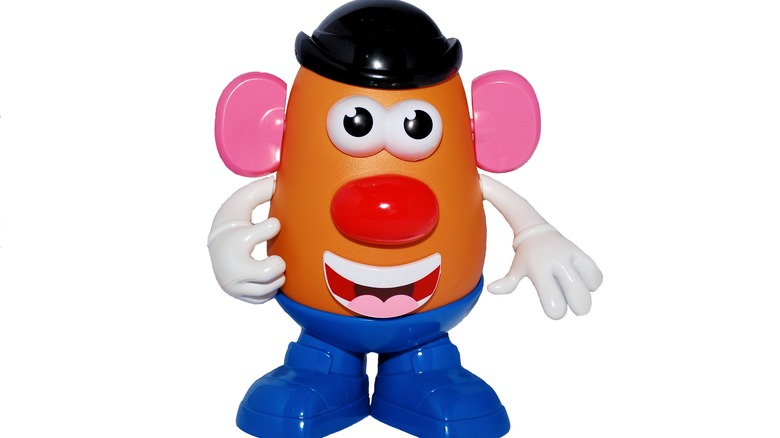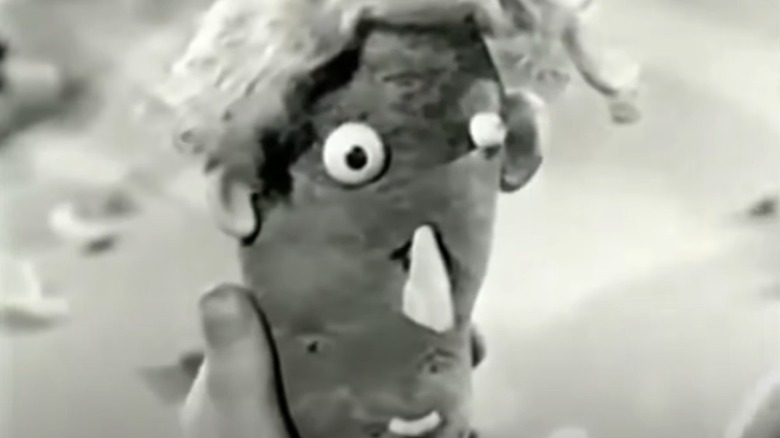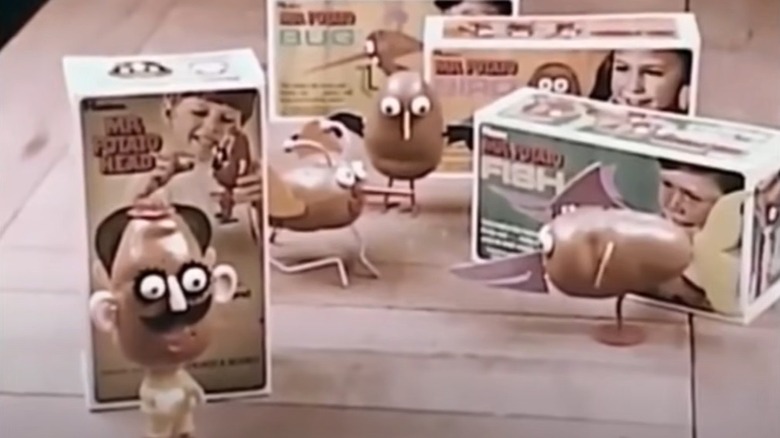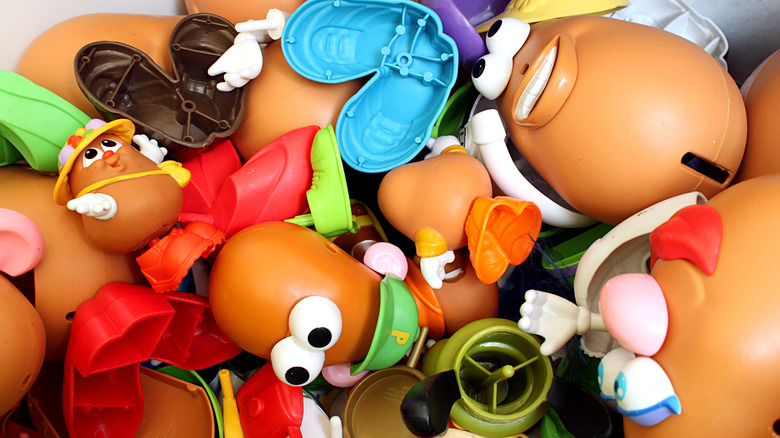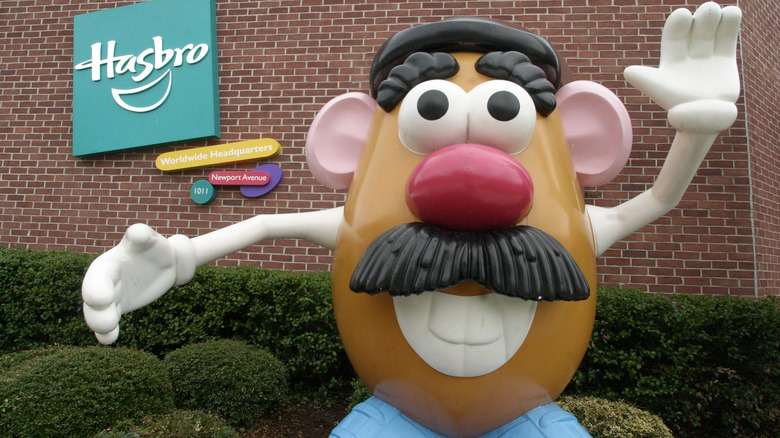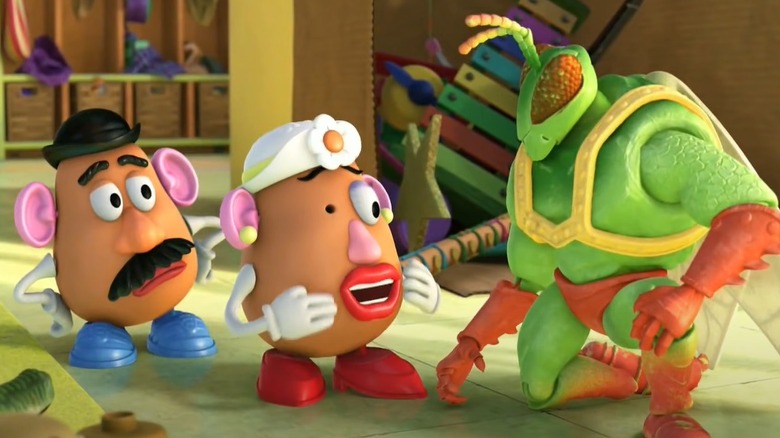What Happened To Mr. Potato Head?
Mr. Potato Head is one of those toys that people from every generation can easily recognize. Baby Boomers remember it as the popular toy that allowed them to foster their creativity by using a real potato, while Millenials know him as the loveable character from the "Toy Story" movies. There's no doubt that Mr. Potato Head has an appeal that lasts generations no matter how simple the toy may be.
More variations of the lovable spud were released throughout the years, and today, Mr. Potato Head remains a popular toy for children. It's not only for kids, though, as there are adults who have a fascination with the character and collect Mr. Potato Head items — from the original releases to the more modern versions. And in a world where there are countless video games and high-tech toys available, Mr. Potato Head still has a place in children's hearts. The toy was inducted into the National Toy Hall of Fame in 2000 for its creative playability.
Who invented Mr. Potato Head?
The person behind Mr. Potato Head was an inventor named George Lerner. According to the Idaho Potato Museum, he made use of potatoes from their home garden and used different types of vegetables and fruits for body parts to make dolls for his sisters. The idea to create Mr. Potato Head began in 1949, and Lerner pitched his invention to various toy manufacturers. However, his concept was rejected by companies, as it was deemed inappropriate. The United States had experienced food shortages and rationing during World War II and the Great Depression, and playing with real potatoes seemed like such a waste.
That didn't stop Lerner from trying, and he eventually landed a licensing contract from a food company, which distributed the body parts and accessories for the potato head as prizes inside cereal boxes, per PBS. Lerner wasn't satisfied with that, though, and he continued to find a toy company that would be willing to sell a stand-alone version of Mr. Potato Head. His efforts paid off when a then-small toy company from Rhode Island took interest in his toy.
Hasbro launched Mr. Potato Head
George Lerner pitched his idea to Henry and Merrill Hassenfeld — two brothers who owned a small toy business called Hassenfeld Brothers (now known as Hasbro). The brothers liked the idea, so they paid $2,000 to the cereal company to halt their production of the toy, and Lerner received $5,000 for the rights to produce Mr. Potato Head, as reported by The Takeout. The Hassenfelds also agreed to give Lerner 5% of every toy kit sold. The toy hit shelves in 1952, but it was far from the Mr. Potato Head that we know today.
The toy kit retailed for $0.98 (about $10.40 in today's money) and came with various parts including ears, two pairs of eyes, facial hair made of felt, feet, hands, three hats, two mouths, four noses, and a pipe (via Love to Know). The kit didn't come with Mr. Potato Head's body and only had a styrofoam head; buyers had to provide their kids with a real potato or any type of vegetable to which the parts could be attached. On April 30, 1952, an advertisement for the toy was aired on television. According to the Idaho Potato Museum, the Mr. Potato Head commercial was the very first toy advertisement on TV, and it was aimed at children, too. Before that, advertisements were only geared toward adult consumers.
Changes to Mr. Potato Head
Mr. Potato Head's launch was a great success, and in the first few months after its release, per PBS, Hassenfeld Brothers earned over $4 million in sales. The television advertisement certainly paid off, but soon, parents started to complain about their kids pestering them about buying Mr. Potato Head for them. Still, most of them succumbed to the nagging and bought their children the hottest new toy on the market.
In 1969, the U.S. passed the Child Protection and Toy Safety Act, which allowed the Federal Drug and Safety Administration to ban the sale of toys that are unsafe for children. The safety issue had been brought up years prior, and Mr. Potato Head was one of the toys deemed unsafe. The toy kit came with small pieces with sharp parts, and parents also complained about finding rotten potatoes in their homes, as reported by Thought Co. As a result, changes were made to the kit; the parts were made larger to avoid children from choking on them, and a plastic Mr. Potato Head body was included in the set to eliminate the need to use real potatoes and other vegetables.
Mr. Potato Head was a cancer-awareness spokespud
Over the years, Mr. Potato Head has changed to keep up with the times. He originally came with a pipe accessory, but times changed and people became more aware of the dangers of smoking. During the American Cancer Society's Great American Smokeout in 1987, Mr. Potato Head surrendered his pipe to Surgeon General C. Everett Koop, and the accessory was officially eliminated from Mr. Potato Head toy kits, as reported by UPI. In the years following, the toy was named the official "Spokespud" for the yearly event.
In yet another big change, Hasbro showed their support for gender-inclusivity in 2021 when they announced that the "Mr." would be dropped from the band name. "Hasbro is making sure all feel welcome in the Potato Head world by officially dropping the Mr. from the Mr. Potato Head brand name and logo to promote gender equality and inclusion," the statement read, per the New York Times. In addition, the toy company also released a gender-neutral Potato Family Pack that encouraged children to create their own versions of a family with the two potato bodies and 42 accessories included.
Recognitions and continued success
Mr. Potato Head wasn't alone in rising to success. Just a year after its launch, Hassenfeld Brothers released Mrs. Potato Head, and the addition was soon followed by their children — Brother Spud and Sister Yam (via All Recipes). The new additions had children wishing to have all the members of the potato family, which only propelled the toy company's success.
Over the years, interest in Mr. Potato Head waned as other children's toys emerged, but there was renewed interest when Pixar's movie "Toy Story" came out in 1995. Craig L. Good, a camera artist from Pixar, revealed how excited they were to get the rights to use Mr. Potato Head as a character in the film. "It was touch and go for a while, but we landed him. To the best of my recollection we didn't pay cash for any clearances, but did offer credit at the end of the film," he revealed in Quora. In 2012, on Mr. Potato Head's 60th anniversary, it was reported that about 100 million units of Mr. and Mrs. Potato Heads had been sold worldwide since the initial release in 1952. Today, the toy line has expanded and includes Potato Head Tots, Mr. Potato Head Chips, and other variations.
